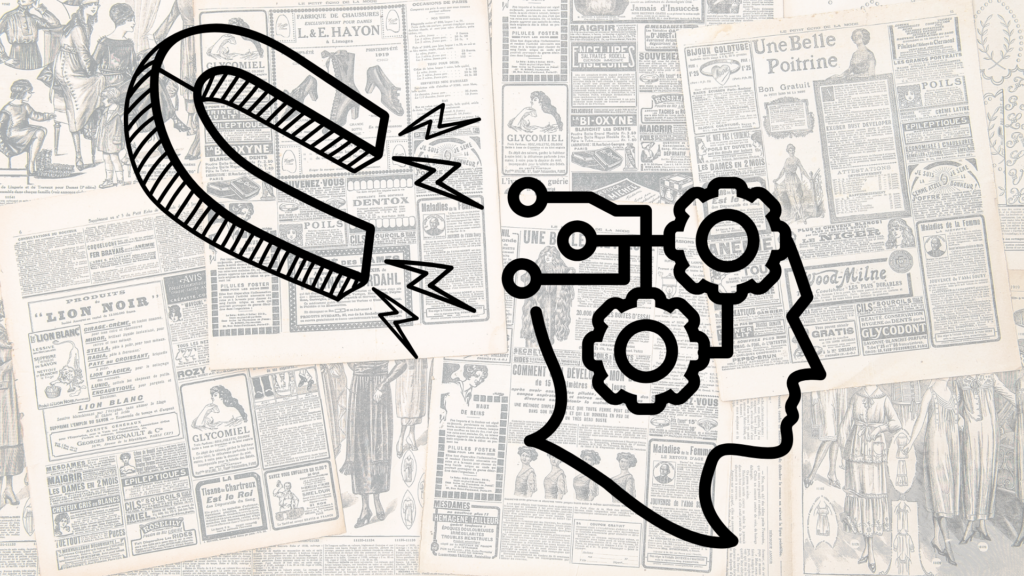You want to talk about double standards?
If I leverage my knowledge of human psychology along with your needs, desires, and interests to convince you to do something for me, it’d be considered manipulation. However, when marketers do the same to influence your purchase decision (convince you to buy a product/service), it’s known as persuasive advertising.
Jokes apart, marketers usually conduct extensive market research to gather various data points about their consumers. They then sort and analyse this data to put together insights about general consumer behaviour. Using this information, they create advertisements that trigger and appeal to the emotions of their consumers. This entire process in a nutshell is referred to as persuasive advertising.
In the following article, I’ll take you through the various techniques that are used as a part of persuasive advertising. I’ll also rope in some examples of ads that you probably already know of – and underscore the persuasive tone of voice in them.
Let’s dive right in!
Table of Contents
How is Persuasive Advertising Different?
“Wouldn’t all advertising be … persuasive advertising?”
That’s a great question. However, that’s not necessarily true.
The general marketing/sales funnel has the following stages:
1) Awareness
2) Consideration
3) Conversion
4) Loyalty
As a marketer creating ads for the first or last stage, you wouldn’t focus on a persuasive tone of voice. At these stages, the consumer is:
(i) Either not aware of your brand, in which case you would first have to create ads that catch their attention, or
(ii) Already loyal to your brand, in which case you would focus more on customer relationship management than persuasive advertising (or advertising in general, for that matter).
However, if you were creating ads for the consideration or conversion stage(s), you would focus on tapping into your consumers’ emotions in an attempt to close a sale – in which case persuasive advertising would be an appropriate choice.
Furthermore, what makes persuasive advertising different is the fact that it specifically prompts the audience to take action – with a strong emphasis on driving tangible results.
In persuasive advertising, communication is geared towards influencing the audience’s decision-making process, usually by employing various psychological techniques. These are discussed in detail below.
Strategies & Techniques for Persuasive Advertising
Let’s get some common ones out of the way first. Continue reading past point #4 for some more unique and uncommon techniques. ((The last one is my favourite, and easiest to implement!))
Principle of Scarcity
No matter who you are, at least once in your life you must have come across one of the following marketing messages:
– “LIMITED OFFER”
– “OFFER VALID ONLY UNTIL MIDNIGHT”
– “EXCLUSIVE DEAL”
Oftentimes, you’ll also come across a timer, like a ticking bomb, on an e-commerce page.
All of these are different ways to influence consumer behaviour by creating a perception of limited availability or scarcity of a product, service, or offer.
When consumers perceive an item or opportunity to be scarce, they often make quicker decisions to avoid the possibility of missing out, even if they hadn’t initially considered making a purchase. This is FOMO (Fear Of Missing Out) at its best!
Since people tend to associate more value with what’s scarce or rare, advertisers use this to create urgency and prompt action among consumers.

However, the younger generation is slightly smarter. They can’t be fooled easily – so as a marketer, you’ll have to adapt. A great example of tailoring the principle of scarcity for the younger generation is Clubhouse‘s case study. By restricting membership to an invite-only basis, Clubhouse managed to create exclusivity – which eventually led to FOMO amongst internet users. This increased demand but limited supply (scarcity) is a great technique of persuasive advertising.
Comparison
When it comes to persuading a customer to shift from your competitor’s product (or service) to yours, one method reigns supreme – comparison. This persuasive advertising technique involves presenting a direct comparison between your offering and other alternatives available in the market.
A couple of ways of doing so include:
– Highlighting differences like features, pricing, and performance;
– Using testimonials & reviews to support claims and endorse your offering.
– Visually representing the advantages using graphs, charts, and side-by-side illustrations;
Customers naturally want what benefits them the most. So, by highlighting your unique features and plus points in comparison to your competitor’s stale product/service, you’re influencing your target audience by appealing to their psychological desire of wanting better.
For the longest time, brands would subtly mock their competitors through TV advertisements. This then evolved into one of the most loved forms of comparison – direct brand wars.
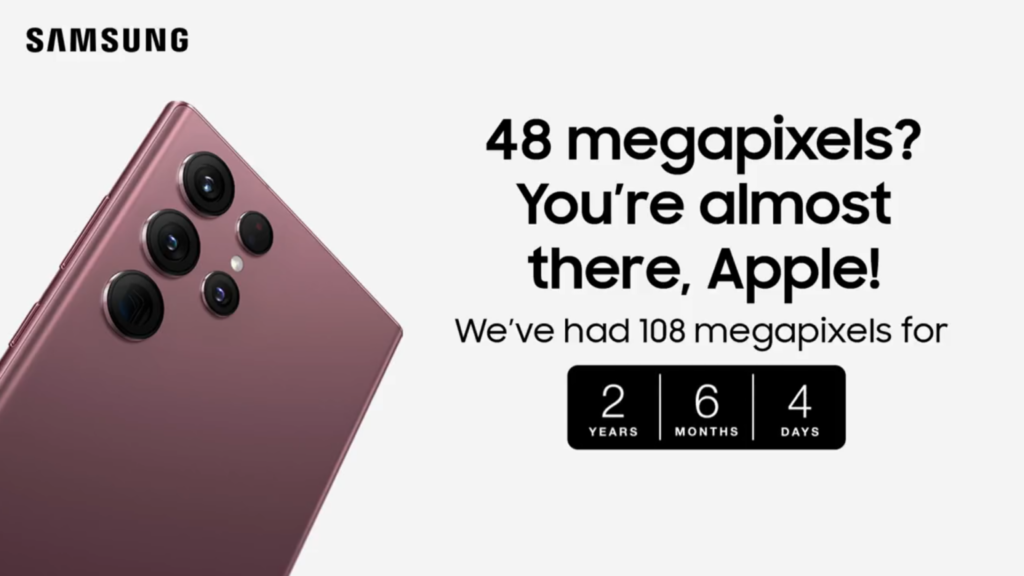

And then somehow we have now reached this minimalist approach:
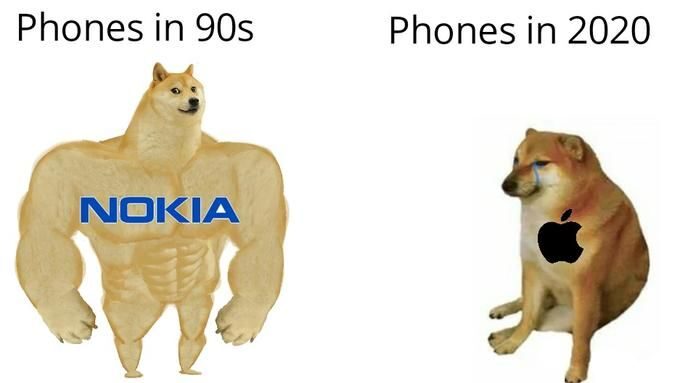
Another reason why this works is because when you as a marketer target your competitor’s existing consumer base, you’re automatically targetting qualified, potential leads. Anyone who uses your competitor’s product/service is naturally interested in your offering as well. So instead of shooting in the dark, you’re able to reach out to a higher quality of audience.
Anti Bandwagon
Jumping on a trend is cool. But do you know what’s even cooler? Going against the trend.
When everyone’s headed in the same direction, there’s some sort of an appeal in going the other way. There’s a feeling of individuality associated with doing so.
Marketers have recognized this – and use this to advertise their product/service as something that will set them apart from the crowd. This is the “anti-bandwagon” method of persuasive advertising that deliberately goes against the grain of popular trends, beliefs, or behaviours to create a unique selling proposition.
Although this technique may only appeal to a niche set of audience – the kind that doesn’t conform to norms – it has a strong influence that, in a way, empowers the individual.
In simple words, it’s looking at someone who doesn’t associate with the crowd and saying to them: “Hey, I feel you. I have this product that makes a statement on behalf of people like us. Try it out!”
The most common example of this method of persuasive advertising that I can think of is perfume ads saying “In a world of boys, be a man” or something very very typical like that, in an attempt to convince people to buy their fragrance.
Celebrity Shenanigans
If I had a penny for every time a random celebrity tried to sell me something, I’d have enough pennies to be a celebrity myself and would be selling things to other people.
~ Me
I don’t really think this category needs any explanation or examples. By now, you must’ve already thought of several ads with celebrities advocating for products they’ve probably never once touched in their lives.
That being said, if Ariana Grande ever sold literal poison in the name of an energy drink, I would buy it and drink it. /s
That’s the entire appeal of using a celebrity in persuasive advertising.
However, times have thoroughly changed. Once people started seeing through this advertising BS, they didn’t want to be fooled anymore. If David Beckham isn’t using the perfume he’s advertising, then why should I?
Enter, micro-celebrities – or better known as – influencers.
Influencer advertising – as a subcategory of persuasive advertising – has gained massive popularity in the recent past, simply because influencers come off as more authentic. For one, they might actually use the products/services that they chose to advertise. Two, influencers, mostly micro, are common folk just like you and me. So they’re more trustworthy as compared to some random actress trying to sell cameras. What does she even know about them!?
Influencer advertising is slowly eating up celebrity advertising’s market share and is expected to grow exponentially over the next few years.
Carrot and Stick Method
So much of persuasive advertising is rooted in human psychology. Generally, (behavioural) psychology recognizes that individuals are motivated by the pursuit of rewards and the avoidance of negative outcomes.
The Carrot and Stick method is a dual method of influencing consumer behaviour – wherein the audience is presented with the carrot (reward) and the stick (negative outcome). Unlike your usual pros and cons list – which would provide a more balanced view on any given topic – think of this as a pros and anti-cons list – both of which positively influence the customer to purchase the product/service.
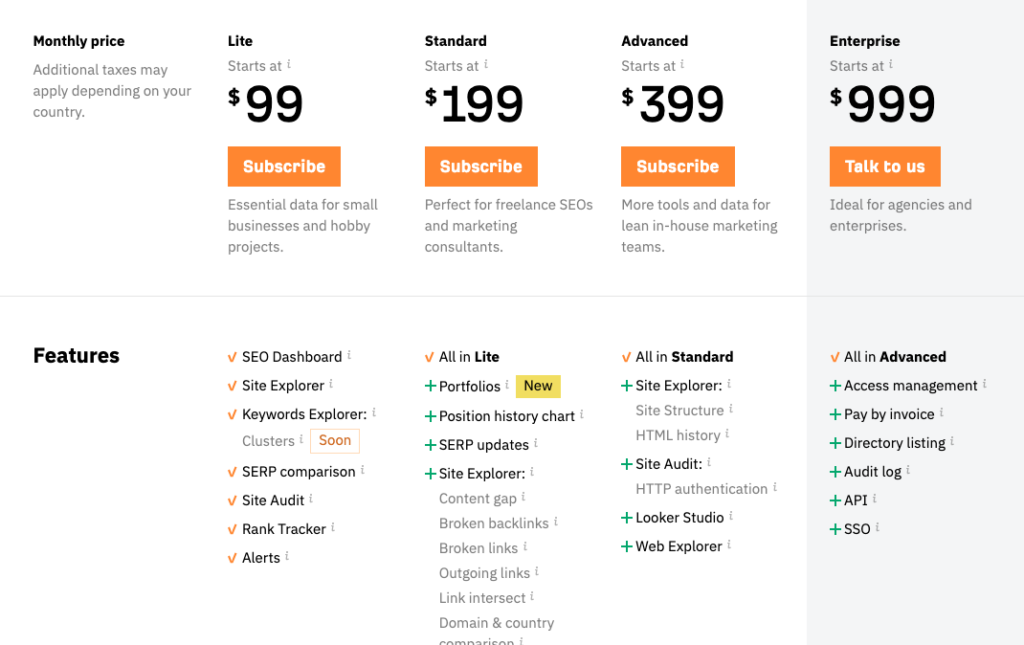
Ahrefs’ pricing page is a great example of this method. They’re promoting each plan – mentioning the pros of having, and cons of not having subscribed to that particular plan.
This is why it’s known as a dual approach to motivation.
While using this method, you have to focus on selling your product not just once, but twice.
First, you will have to list out all the benefits of your product/service. By exhibiting positive incentives, you have to create a desire for your product/service. After that, in order to reiterate how crucial your offering is, you will have to highlight the loss your audience will incur in the absence of your product/service. By creating a sense of urgency and FOMO, you urge the customer to make a purchase.
This method of persuasive advertising works best when there’s a pressing issue that you’re actively solving with your product/service – so that you’re able to execute the ‘stick’ part effectively
Trojan Horse Method
First, let’s establish some context.
The Trojan Horse incident is a legendary story from Greek mythology. The Greeks hid elite soldiers inside a hollow wooden horse and left it at the gates of Troy as a supposed gift. The Trojans, believing it to be a peace offering, brought the horse into the city. At night, the Greek soldiers emerged from the horse, opened the city gates from the inside, and allowed the Greek army to enter Troy. The city was then sacked and defeated. The Trojan Horse is often cited as a symbol of deceit and clever strategy.
Drawing inspiration from this story, advertisers often present an ad with something exciting, seemingly innocent, usually unrelated to the ultimate goal. However, like the soldiers hidden in the wooden horse, there’s a hidden agenda or message in the advertisement, the purpose of which is to influence your decision to take a specific action.
Content marketing is a modern form of the Trojan Horse method. Although brands aren’t explicitly promoting their product/service, if you pay close attention, most of the content will link back to the brand, calling for action in one way or the other.
Some elements that are at the core of this method include:
~ Diverted Attention: Distracting the audience from the underlying message.
~ Subtelty: Integrating the product/service in a non-apparent way
~ Storytelling: Engaging the viewers emotionally to lead them along a narrative path
Honourable Mentions
Before I reveal the last technique on this list, I’d like to introduce some other more common techniques that are generally used in persuasive advertising. Yeah, I’m a Watchmojo fan, how could you tell?
Second Person Verbiage
If you scroll back up to the start of the article and pay close attention, you’ll notice that I’ve written the article as if I’m talking to just you, not an entire crowd. It’s. a conversation between two people, you and I (this is why you should probably leave a comment in response to me). Hence, second-person verbiage.
Advertisers use this technique too. Most of the communication is directed towards you. In some way, writing using this style makes the text feel more casual, not driven by any agenda. Although, it almost always is.
In fact, using this style makes the ads more actionable, in a subconscious sense.
Humour
One common element you’ll notice across a majority of advertising communications is, you guessed it, humour. It’s an easy way to hook people onto what you’re saying – provided your jokes land, which is generally the tough part.
Simply enough, when you laugh, your brain releases happy chemicals, and a positive association is established towards the advertisement. That way, you’re more likely to at least consider, if not buy the product immediately.
Not entirely sure if my humour’s landing, but I’ve also been trying to influence you positively right from the get-go.
Curiosity
As human beings, we’re a naturally curious species, or at least that we’re supposed to be. If deployed correctly, curiosity can prove to be an effective tool when it comes to persuasive advertising.
Some brands release their advertisements in parts as if they are part of a thriller series on Netflix. This is to instil curiosity and create conversation among the target audience.
In a simpler sense, if you recall, copies from most print advertisements are in the form of questions.
“Want to know how you can save 3 hours doing laundry?”
“Do you want to save money on your daily commute?”
These put the value forward while withholding the actual information – so that you have to read along to find out.
^ That’s actually a great segway into our last and final technique for this list.
Call To Value
One of the easiest, most up-front technique in persuasive advertising is the call to value technique.
Used in place of the more commonly known call to action, the call to value reiterates the most important aspect, the USP of the product/service in a crisp manner at the end of the advertisement. It emphasizes the value, benefits, or advantages that consumers will gain by taking a specific action – instead of simply stating the action itself.
Effective CTVs align with consumers’ needs, desires, and pain points – hence influencing their decision. It positions the action as a gateway to valuable benefits, thereby increasing the likelihood of consumer engagement and conversion.
CTVs, as opposed to CTAs, attempt to create a vision and paint a picture in the mind of the consumer. “Click here to book a trip” is flavourless and sounds like an instruction. On the other hand, “click here to experience nature at its best” sounds exciting and justifies spending your money on it.
That brings us to the end of our article. Let’s quickly recap all the techniques:
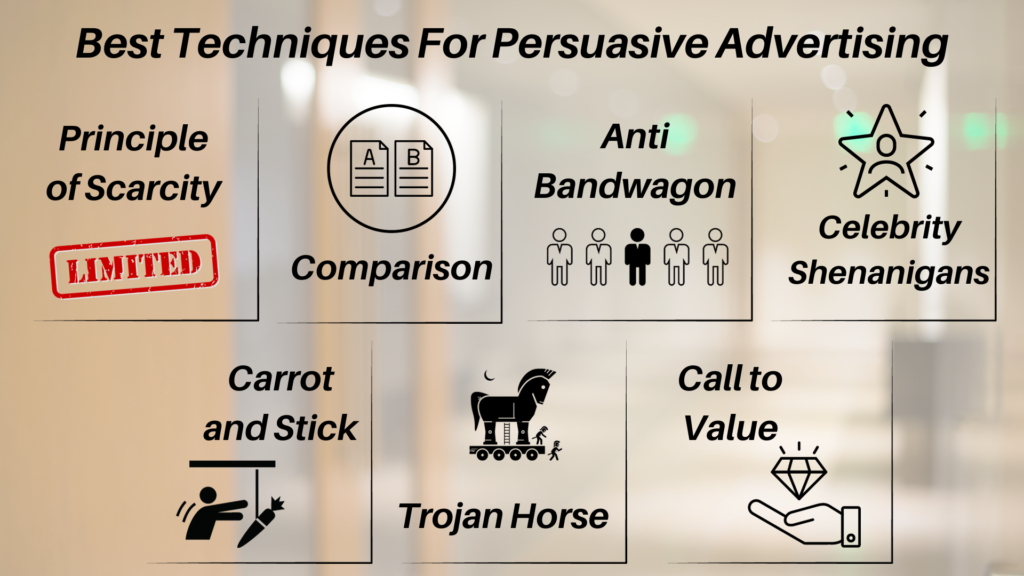
Needless to say, not every technique is going to suit every product/service niche – however some experimentation can go a long way.
More importantly, as a marketer, it’s important to be aware of these techniques. Read them a couple of times, and look for examples of your own (Share them with me, I’d be happy to add them to this article). Simply allow the subtlety of persuasive advertising to seep into your subconscious, and you’ll be able to apply this more effortlessly – and create influential advertisements that drive action.
My previous articles throw light on some other aspects of advertising, you can check them out here.
Until then, Tiddles out!
Frequently Asked Questions
What is Persuasive Advertising?
Using customer data & insights to create advertisements that trigger a certain level of emotional response from the consumer, generally persuading them to take action – is known as persuasive advertising.
What are some Strategies for Persuasive Advertising?
Some strategies for persuasive advertising include Principle of Scarcity, Principle of Comparison, Anti-bandwagon, Celebrity Shenanigans, Carrot & Stick, Trojan Horse, and Call to Value. You can read about all of these in detail in my blog!

